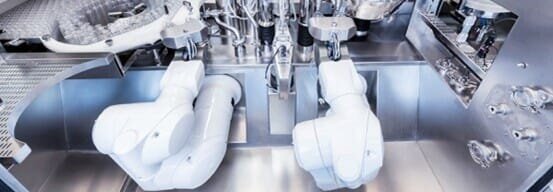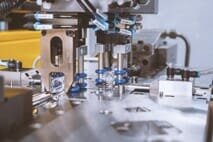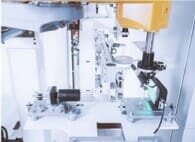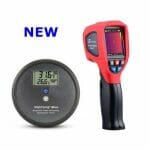There is little doubt that the events of the last year have had a huge impact on businesses across all sectors. Significantly, demand across the manufacturing landscape changed, in some cases dramatically, as the automotive sector stalled whilst those operating within the medical, pharmaceutical and life-sciences sectors worked flat out to produce the PPE, Ventilators, Sanitisers, Drugs and of course develop the Vaccines needed to combat the spread of COVID-19.
The surge in demand faced by manufacturers during this time highlighted the need for many businesses to re-asses their production methods, to enable them to not only respond more quickly to changes in the market, but also to improve productivity levels whilst maintaining the high quality and regulatory standards required by the sector. Although in certain cases increasing the number of manual operators can deliver a short term boost to production, retention of personnel in a world where there appears to be growing labour shortages will never be a satisfactory long term solution. A growing realisation by many businesses that a milestone had been reached in their approach to manufacturing has been the catalyst for a move towards increased levels of automation, based upon the innovative integration of robots.
Within the world of robotics and automation, the name Stäubli has long been synonymous with the Medical and Pharmaceutical sectors, where the Stericlean and Cleanroom versions of the company’s robot systems are now at the heart of a diverse range of applications. Stäubli’s Simon Jenkins explains: “With a comprehensive installed base within these sectors, we and our integration partners are able to draw upon a wealth of experience when approached by businesses seeking to automate their manufacturing processes. This, combined with the fact that we have robot models specifically designed to meet the most stringent requirements for pharmaceutical and cleanroom applications, means that we are able to provide robust, high-performance and sector compliant solutions”.
Opening Up New Application Areas
Robots are now finding their way into a diverse selection of new application areas. For example, until recently, the use of robots on liquid filling lines for vials was not considered to be viable. However, Stäubli’s Stericlean range of robots has opened up new scope for system design, as evidenced by the innovative solution developed by an Italian equipment manufacturer.
Steriline, based in Como in Italy has been supplying machinery for filling lines to the pharmaceutical industry for almost 30 years. They develop customer-specific solutions for aseptic processes. For their latest generation of machines, Steriline wanted to take advantage of the benefits which robots provide. One of the greatest challenges was that the robots would not only have to comply with ISO 5 Class cleanroom standards, but also have to work permanently in a VHP (vaporized hydrogen peroxide) environment.
In this demanding application, three identical Stäubli TX60 Stericlean robots are integrated within the new system, performing all of the essential handling and transfer operations between the filling, capping and sealing stations.
Supporting Operation Warp Speed
The U.S. government’s Operation Warp Speed program has the ongoing objective of delivering vaccines to the entire country as quickly as possible. Producing the vaccine itself is just one part of the solution, manufacturing the vials to hold the vaccine is also a crucial part of the delivery programme. The benefits of these transparent containers, coated with silicon dioxide, include greater resistance to breakage compared to glass and an improved oxygen barrier, which also simplifies low-temperature and longer term storage.
The company chosen to manufacture the automated solution, which produces the 600,000 vaccine vials required every day, is German based systems integrator ZAHORANSKY AG, a business with an excellent reputation in the medical field proven by their trend-setting automation solutions.

(600,000 vaccine vials a day are handled, processed and inspected directly on the machines in a fully automated process)
Achieving this demanding project at short notice and within very condensed timescales required a herculean effort from the organisations and partners involved. During the ongoing discussions with the customer, the number of lines to be delivered increased from two to four, then to six, and finally to 11. Each of the 11 lines in the final configuration produces 10 vials every 17 seconds, and the vials must undergo numerous process steps immediately after production before receiving the final nano-coating.

(Each of the machines produces 10 vials every 17 seconds. These must pass through numerous process steps directly after production)
Stäubli’s reputation as a leading provider of robots to the pharmaceutical and medical industries was instrumental in the company being selected as the supplier of the 53 SCARA and 6-axis robots required for the project. A combination of rapid delivery by Stäubli, and ZAHORANSKY’s ability to customise three standard cells from their range to meet the demands of the application, led to significant time savings. In addition, the seamless connection of the various ZAHORANSKY modules made it possible to supply the complete line with high pressure and maintain a constant ISO Class 8 cleanroom level.
Each of the 11 lines includes three SCARA and 6-axis robots. Even in their standard configuration, these robots meet the required clean room classification. The Stäubli robots perform a comprehensive array of tasks including unloading the injection moulding machines, transferring components between modules and the various stations used for check weighing, laser coding, measurement, surface analysis and finally loading into tubs for subsequent transfer to a nano-coating process.
- The complete automation of the injection moulding machines is based on Zahoransky’s standard cells, which were specially tailored to the requirements and equipped with Stäubli robots.
- A large number of integrated quality checks ensure that only good parts leave the systems.
- With their ground-breaking hygienic design, the Stäubli robots already meet the applicable cleanroom classification in their standard version.
Stäubli’s Simon Jenkins concludes: “The two examples included here are representative of the benefits which robots and associated automation technologies can bring to Pharma, Medical Device and Life-Sciences businesses of all sizes. The flexibility and high speed of robots, together with their ability to operate within demanding clean-room environments, mean that they fast becoming the preferred solution to a growing number of applications in these sectors.”











